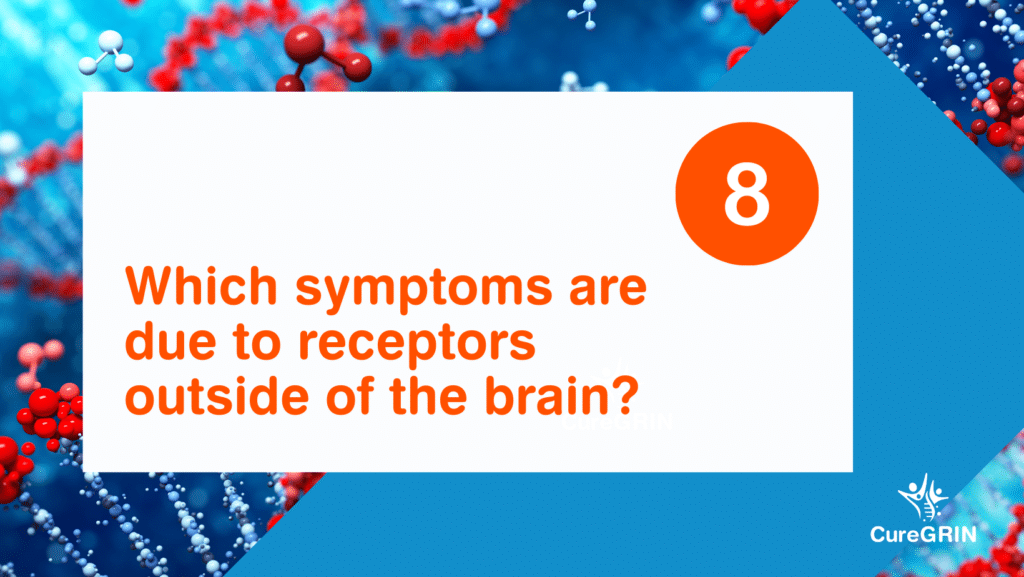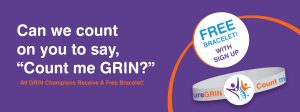Essential Question 8: Which symptoms are due to receptors outside of the brain?
Share This Post

Each Thursday throughout the summer, CureGRIN will be sharing a blog post that summarizes one of the 10 “Essential Questions” that need to be answered in order to find cures and treatments for GRIN Disorder. These questions are a central component of our recently unveiled Research Roadmap titled, “Treat the Symptoms. Cure the Disease.” You can find links to all of these blog posts here.
Today, we focus on Essential Question 8: Which symptoms are due to receptors outside of the brain?
We know that the GRIN and GRIA genes are highly expressed in the brain. Yet, the GRIN genes are also expressed at low levels outside of the brain. The GRIA genes are expressed outside of the brain as well but to a much lower extent than GRIN genes. CureGRIN would like to explore the possibility that some of the symptoms of GRIN Disorder might be attributed to the expression of receptors outside of the brain. For example, is hypotonia caused by NMDARs in the brain or the somatic nervous system? Are respiratory issues caused by hypotonia originating in the brain neurons or localized in the respiratory system?
Gene expression involves the use of a molecule called messenger RNA (mRNA) to convert genetic information from genes into proteins. Scientists have been able to measure the amount of mRNA in different areas throughout the body. These studies have determined that the GRIN and GRIA genes have the highest expression levels in the brain.
One example of research on NMDARs outside of the brain is a study that was published in 2021, which assessed the expression of NMDARs in the human pulmonary artery (Dong et al.). The pulmonary artery works to carry deoxygenated blood from the heart to the lungs. Previous research has indicated that the NMDAR subunits GluN1 and GluN2A-D are expressed throughout the lungs and trachea. One cell type that expresses NMDARs in the lungs is the pulmonary airway smooth muscle cells.
When NMDARs are activated in these pulmonary airway smooth muscle cells, calcium (Ca2+) is released and the airway contracts. Yet, if there is too much activation of the NMDARs in the lungs, acute nitric oxide-dependent injury can occur. CureGRIN has been notified of a very small number of unexpected events related to respiratory issues in our patient community. Therefore, we are interested in learning more about how the NMDARs in these cells might play a role in GRIN disorder.
CureGRIN will be working with physicians and scientists around the world to explore what symptoms of GRIN Disorder might possibly be occurring because of receptors in other parts of the body.
Reference: Dong, Y.N., Hsu, FC., Koziol-White, C.J. et al. Functional NMDA receptors are expressed by human pulmonary artery smooth muscle cells. Sci Rep 11, 8205 (2021). https://doi.org/10.1038/s41598-021-87667-0 https://www.nature.com/articles/s41598-021-87667-0#citeas
Read more Posts

CureGRIN Launches $250,000 Campaign
Share This Post Share on facebook Share on linkedin Share on twitter Share on email CureGRIN is looking for 100 GRIN Champions to help us

Fears for Our Kids with GRIN Disorder
Share This Post Share on facebook Share on linkedin Share on twitter Share on email We asked family members on the CureGRIN Facebook page to
